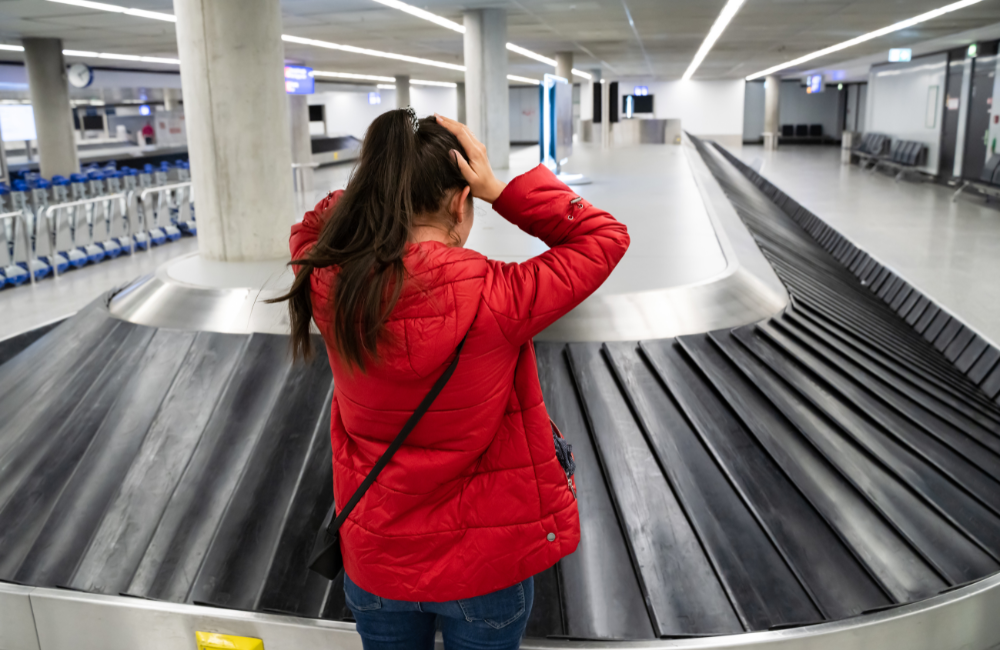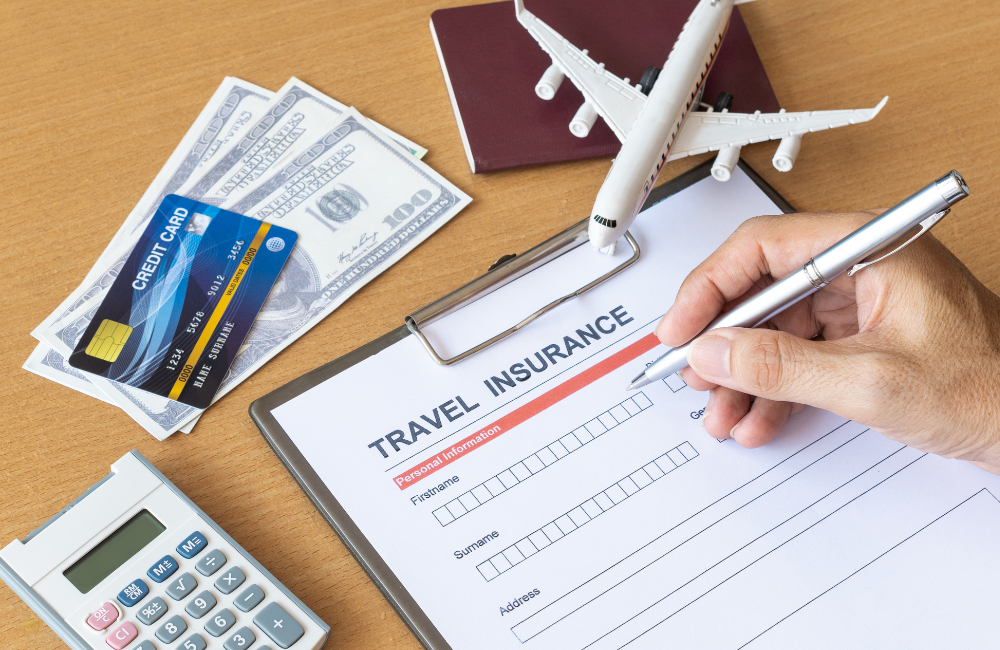What does excess mean in travel insurance?
Simply put, travel insurance excess is the amount you agree to pay towards any claim before your insurer picks up the rest.
If you’re from the US or Australia, you might know this concept by a different name. It’s essentially the deductible on your policy.
In this post, I’ll explain in clear, friendly terms what a travel insurance excess is, why it exists, how it’s applied (per claim or per policy), how to choose the right excess for your needs, and whether excess waivers (no-excess options) are worth it.
I’ll even share a few real-world examples (in good old British pounds) to illustrate how excess can affect your claim payout.
Ready? Let’s roll.
Ready for unlimited adventure? Get travel insurance that covers over 150 activities and 190 destinations.
What Is a Travel Insurance Excess?
A travel insurance excess is the portion of any claim that you are responsible for paying yourself.
It’s usually a fixed amount stated in your policy. For example, if your policy has a £100 excess, and you make a claim for £500, you would pay the first £100, and the insurance would cover the remaining £400.
Essentially, the insurer “deducts” the excess from the payout.
According to the Rise & Shield policy wording, the excess is defined as “the amount you must pay as part of certain claims”, and this amount is per person, per section of the policy.
In practical terms, “per person, per section” means that each insured person and each area of coverage (section) has its own excess.
If two people on the same policy both have medical claims, each might have to pay the excess.
If you claim under two different sections (say, one claim for medical expenses and another for lost baggage), an excess could apply to each section separately.

Excess vs Deductible
Don’t get confused by terminology. Excess and deductible refer to the same thing.
UK policies use “excess,” while in the US (and some other countries) the term “deductible” is used. Both mean the amount deducted from your claim payout or paid by you when you claim.
Not every part of a travel insurance policy carries an excess.
Often, certain benefits come with no excess at all (sometimes noted as “Nil” excess).
For instance, personal accident benefits or travel delay compensations might have no excess, meaning the insurer pays from the first pound up to the limit.
Always check the policy’s summary of benefits to see which sections have an excess and which don’t.
In the Rise & Shield plans, most claim sections (like baggage, medical, cancellation, etc.) carry a standard £100 excess per claim, whereas some specific benefits have Nil excess.
I’ll dive into examples soon, but first, let’s understand why this excess exists in the first place.

Why Insurers Use an Excess
You might be wondering, why does this travel insurance excess thing exist at all? Insurers include an excess on policies for a few good reasons:
To Deter Very Small or Frivolous Claims
If there were no excess, people might claim for every minor loss or inconvenience.
A £10 souvenir, a 30-minute flight delay, you name it. Handling countless small claims would drive up administrative costs and ultimately premiums for everyone.
An excess creates a threshold so that insurance is used for significant losses, not trivial ones.
To Discourage Fraud or Misuse
An excess also adds a hurdle for anyone thinking of making a false claim.
If a fraudster knows they’ll have to pay, say, £100 out of pocket to get a payout, they’ll be less inclined to invent claims.
It’s a way for insurers to ensure policyholders have some “skin in the game.”
Ready for unlimited adventure? Get travel insurance that covers over 150 activities and 190 destinations.
To Share Risk With the Traveller
By accepting an excess, you agree to shoulder a small portion of the risk.
In return, the insurer can charge you a lower premium. Essentially, an excess helps keep the cost of the insurance down.
If insurers covered every claim in full with no contribution from the insured, they’d have to charge higher premiums to cover the increased claim costs.
With an excess, premiums are a bit more affordable because the insurer isn’t paying out the first part of each claim.
To Give You Choice and Flexibility
Many insurers allow you to choose your excess amount (within a range) when buying a policy.
This lets you decide between a higher premium with a low/no excess, or a lower premium with a higher excess. It caters to different travellers’ preferences on risk versus cost. I’ll talk more about choosing the excess in a moment.
In short, the excess is there to make insurance sustainable and fair for everyone. It means we, as travellers, won’t bother claiming £5 and £10 incidents, and insurance can focus on the bigger issues when we truly need help.

Per Claim vs Per Policy Excess
One important detail to understand is how often the excess is applied. Is it taken once per policy (only the first claim), or for each claim you make? This can vary by insurer and policy:
Per Claim (Per Section) Excess
This is the most common scenario. For each separate claim or incident, the standard excess will apply.
For example, if you catch a stomach bug and claim medical expenses, you pay the excess on that claim.
Later in the trip if your camera gets stolen and you make a baggage claim, you’ll again have the excess deducted on that separate claim.
Each incident is treated on its own.
With Rise & Shield’s policy, the excess is per person and per section, which effectively means each claim on each section will have the £100 excess taken.
So if you have multiple unrelated issues, you’re likely to incur the excess each time.

Per Policy (Maximum) Excess
Some travel insurance policies set a maximum total excess per policy. This means there’s an upper cap on how much you pay out of pocket in excess, no matter how many claims you file.
For instance, a policy might say “£100 excess per claim, up to a maximum of £300 in total excess per policy.”
If you made three claims of £100 excess each, you’d hit the £300 cap. After that, any further claims in that policy period wouldn’t deduct another excess. This structure is less common, but it exists.
As Confused.com notes in their travel insurance guide, “Some insurers have an excess per claim... Others have a maximum excess per policy, which limits how much you pay for all claims under the same policy.”
Always read the policy details to see if such a cap applies.

What Does This Mean for Us?
In practice, most single-trip travel insurance policies in the UK apply the excess on a per-claim basis.
Annual multi-trip policies may occasionally cap the excess for the year, but many still apply it per incident.
Rise & Shield’s policies, for example, do not have an annual cap listed. You would pay the £100 each time you have a new covered claim, except in sections where the excess is nil or a special excess applies.
Speaking of special excesses: note that sometimes a policy might have a different excess for particular situations.
A good example in our case is emergency helicopter rescue.
Normally, medical claims abroad have a £100 excess, but if you require a helicopter evacuation for medical reasons, the policy excess jumps to £1,000 for that rescue. (This is a unique case to discourage unnecessary helicopter evacuations, as I’ll explain later.)
The key takeaway is that you should check each coverage section in your policy for its excess terms. It could be £0 on some claims, £100 on most, and higher for specific scenarios.

How Much Excess Should You Choose?
When buying travel insurance, you might have a choice of excess amounts.
Common options might be £0 (no excess), £50, £100, £250, etc.
Choosing the excess is essentially deciding how much you’re willing to pay out of pocket if you claim, versus how much you want to pay upfront in premium. Here’s how to think about it:
Lower Excess Vs Higher Excess
A low excess (or zero excess) means you’ll get more back if you need to claim, but you’ll usually pay a higher premium for that benefit.
Conversely, opting for a higher excess (e.g. £250) can reduce your premium cost, because you’re agreeing to cover a bigger first chunk of any loss. It’s a trade-off between what you pay now (premium) and what you might pay later (excess if you claim).

Assess Your Risk and Budget
Consider your personal situation and the trip you’re insuring.
Are you risk-averse and want peace of mind that you won’t have to pay much if something goes wrong? Then a low excess or even an excess waiver (no excess) might appeal, even if it costs a bit more.
On the other hand, if you’re on a tight budget for the trip and willing to take on a small risk, accepting a higher excess could save you money on the policy.
Just be sure you can comfortably afford to pay that excess amount in an emergency. Never choose an excess so high that paying it would be a hardship for you.
Frequency of Travel and Claims
If you travel often or have an annual policy, think about the chances of multiple claims.
With a per-claim excess, multiple incidents mean multiple excess payments. If you suspect you might end up claiming several times (for example, a long adventurous trip with gear and activities), a lower excess or cap might actually save you money in the long run.
If you rarely claim or it’s a short, chill holiday, you might gamble on a higher excess since the odds of claiming are low.

Typical Value of Items You’d Claim
Here’s another angle: look at what you might claim for.
If you’re mostly worried about big-ticket emergencies (like hospitalisation, major trip cancellation) and not minor losses, a higher excess is less of an issue because any claim would likely be much larger than the excess.
But if you think you might need to claim smaller things (a £200 delayed baggage spending, a £150 doctor visit, etc.), a large £250 excess would wipe out most of those claims.
In such cases, a lower excess makes claiming “worth it.”
What’s My Opinion?
As a traveller, I usually lean toward the standard £100 excess on my policies, which is a common middle ground.
It keeps premiums reasonable while not exposing me to huge out-of-pocket costs.
I personally avoid ultra-high excesses (like £500), because I know that would discourage me from claiming at all unless something truly disastrous happened.
Everyone’s risk tolerance is different, though. Choose an excess that you feel comfortable with both in your wallet and your peace of mind.
But wait a minute, what about travel insurance excess waivers? Let me explain.

Are Excess Waivers Worth It?
You might have seen an option to buy an “excess waiver” or a no-excess policy. This means you pay an additional fee (or choose a plan) so that the excess is waived if you need to claim. This effectively makes your excess £0.
The question is, is it worth paying extra for no excess? Let’s look at some pros and cons.
Ready for unlimited adventure? Get travel insurance that covers over 150 activities and 190 destinations.
Pros of No-Excess Travel Insurance:
Here are the advantages of a no-excess travel insurance policy.
Full Reimbursement
If you have no excess, any valid claim gets paid in full up to the policy limits.
You won’t have £50 or £100 deducted off the top. This is especially nice for smaller claims, where an excess might otherwise eat up most of your payout.
With a waiver, even a £50 claim for a doctor visit could be reimbursed (whereas with a £100 excess you’d get nothing back in that scenario).
No Out-of-pocket Surprise at Claim Time
Psychologically and practically, it’s comforting not to have to pay anything when something goes wrong.
When I’m stressed, dealing with a stolen wallet or a flight cancellation, not having to shell out an extra £100 to make a claim is a relief.
If you end up making multiple claims on one trip, having no excess means you avoid paying an excess each time, which could otherwise add up.
Makes Claiming Worthwhile
With no excess, you’re more likely to claim what you’re entitled to.
Travellers often don’t bother claiming for moderate losses because “ah, the £100 excess means I’d only get a few quid back.”
A no-excess policy means you won’t forfeit part of your coverage due to the excess. Even those moderate claims will be paid, which can be more “worth it” for you.
Sounds fantastic, right? Wait. There’s more.

Cons of an Excess Waiver:
Here’s why I think an excess waiver isn’t real value.
Higher Premium
There’s no free lunch. If the insurer isn’t going to deduct an excess, they charge you more upfront.
No-excess policies are usually more expensive than the same coverage with an excess.
For example, one might compare a single-trip policy costing £20 with a £100 excess versus perhaps £30 with no excess.
I found that a basic policy with a £250 excess might start around £2.80, whereas a no-excess version could start around £5.64. That’s roughly double. The difference varies, but you will pay a premium for the waiver.
Limited Availability
Not every insurer offers an excess waiver. Your choice of providers might be narrower.
If you need specialised cover (for example, insurance for hiking Kilimanjaro), you might have fewer no-excess options or might not get the waiver on those parts of the cover.
Waiver May Not Apply to All Claims
Here’s a nuance: even if you purchase a “no excess” option, some sections might still carry a compulsory excess. Always check the fine print.
In some policies, the waiver might exclude certain things (for instance, there could still be an excess on personal liability claims or on that infamous helicopter evacuation).
So you might still end up paying an excess in particular scenarios. It’s important to know exactly what your excess waiver covers.

What Do I Think?
Given these points, whether an excess waiver is worth it depends on your preference and trip details.
If paying an extra £10-£20 in premium to remove a £100 excess gives you peace of mind, and you can afford it, many would say it’s worth it for the psychological comfort alone.
On the other hand, if you’re okay covering that first £100 yourself and would rather save on the premium, that’s perfectly sensible too.
Either way, always do the math: compare the additional premium vs. the excess amount and think about your likelihood of claiming.
And talking about maths, let’s get into some real-world examples.

Real-World Cost Scenarios
Let’s bring all this theory to life with a few scenarios.
These examples use typical figures (in GBP) from the Rise & Shield policy to show how the excess affects claim outcomes:
Ready for unlimited adventure? Get travel insurance that covers over 150 activities and 190 destinations.
Medical Emergency Abroad
I once got nasty food poisoning in Southeast Asia and racked up a £300 hospital bill.
With my travel insurance excess of £100, I paid the first £100 to the clinic, and the insurance covered the remaining £200.
Had I opted for a zero-excess policy, I’d have been refunded the full £300.
On the flip side, if the hospital bill had only been £80 total, a £100 excess means I wouldn’t be able to claim anything (because the expense didn’t exceed the excess).
This illustrates that with an excess, very small claims effectively aren’t claimable. Insurance kicks in only beyond that threshold.

Lost Baggage Claim
Imagine your checked bag gets lost by the airline.
You have coverage up to, say, £1,000 for baggage on your policy, with the standard £100 excess. You had £800 worth of belongings in that bag.
In a successful claim, the insurer would deduct £100 and pay you £700 to cover the loss.
If your bag’s contents were valued at only £100, again, you’d get nothing (since it equals the excess amount).
With no excess, you’d have gotten the full amount of any loss up to the policy limit.
Many travellers face this decision: “Is it worth claiming my £120 broken suitcase if I’ll only get £20 after the £100 excess?” Sometimes it’s not, which is exactly why the excess exists as we discussed.

Tech Gadget Claim
My friend had his £500 phone stolen on a trip.
After the £100 excess, the insurance paid him £400. He was glad he had coverage, though he still had to chip in that first hundred.
If he had chosen a higher voluntary excess, say £250, he would have only received £250 back, meaning he absorbed half the loss himself. That shows how a high excess can significantly reduce your payouts.
Ready for unlimited adventure? Get travel insurance that covers over 150 activities and 190 destinations.
Helicopter Evacuation Rescue
This is the big one.
While trekking in the Himalayas, I always keep in mind that if I get acute mountain sickness and need a helicopter lift, our Rise & Shield policy has a special £1,000 excess for helicopter rescue.
Helicopter evacuations are very expensive (often several thousands of pounds), so the policy stipulates that I (the insured) must cover the first £1,000 of that cost, and the insurance covers the rest.
For example, if a helicopter evac costs £5,000, I’d be on the hook for £1,000, and the insurance would pay £4,000.
That may sound steep, but without insurance, I’d face the entire £5,000 bill alone!
The higher excess here is designed to discourage unnecessary airlifts and help keep the insurance sustainable (unfortunately, there have been cases of fraudulent or avoidable helicopter rescues in adventure travel, so this £1,000 excess is there to prevent misuse).

Here’s My Takeaway
Always call the insurer’s emergency assistance and get approval before an evacuation, and know that you’ll need to contribute if a chopper ride is needed.
My Pro Tip: Check out our in-depth Helicopter Evacuations page for more on how we handle these situations and why that excess exists.
As you can see, the excess can significantly impact your out-of-pocket cost when something goes wrong. It’s important to be aware of what your excess is for each kind of claim.
I always advise fellow travellers: mentally prepare you’ll pay that excess amount if an incident happens. If you’re comfortable with that, you’ve set the right excess for yourself.
Now, let’s look at some commonly asked questions about travel insurance excess.

Travel Insurance Excess Frequently Asked Questions
What does an excess mean on travel insurance?
It’s the amount you pay out-of-pocket on a claim. In other words, the insurer will subtract the “excess” from any payout they make to you.
For example, if you have a £100 excess and you make a claim for £500, you’ll be responsible for £100 and the insurer pays £400.
Think of it as the portion of the loss deducted from the insurance settlement (hence why it’s called a deductible in some countries).
An excess applies per the terms of your policy, usually for each claim/incident, unless stated otherwise. It’s there to prevent lots of tiny claims and to keep premiums affordable.
Ready for unlimited adventure? Get travel insurance that covers over 150 activities and 190 destinations.
What is the maximum excess I’d have to pay under one policy?
This depends on the policy. Many travel insurance policies do not cap the total excess, meaning if you have multiple claims, you’ll pay the excess each time.
However, some insurers set a maximum aggregate excess for the policy term.
For instance, they might cap your total excess payments at, say, £200, even if you make several claims. After you’ve paid £200 worth of excess, any further claims wouldn’t require another payment.
This isn’t very common, so assume you’ll pay your policy’s standard excess for each separate claim unless the policy specifically mentions a cap.
Always check your policy’s wording or ask the insurer.

Can I get travel insurance with no excess (excess waiver)?
Yes, some insurers offer a no-excess policy or an “excess waiver” add-on.
This means if you make a claim, you won’t have to pay an excess at all. The insurer covers the claim from the first pound.
You either purchase a plan that has £0 excess standard, or pay extra on a policy to waive the excess. The advantage is you get full payouts on claims; the trade-off is a higher premium upfront.
For example, you might pay a bit more for the policy so that you don’t lose £100 on every claim.
Whether it’s worth it comes down to personal preference and the cost difference. If a no-excess policy only costs slightly more, it can be great for peace of mind.
Just remember to read the fine print: an excess waiver might not eliminate all types of excess. Certain claims (like some high-risk sections or medical equipment) could still have a compulsory excess even on “no excess” policies
The waiver usually applies to the standard excess, but check for any exceptions. Always confirm with the insurer what “no excess” truly covers.
Ready for unlimited adventure? Get travel insurance that covers over 150 activities and 190 destinations.
Is an “excess” the same as a “deductible”?
Yes. These two words mean the same thing in the context of insurance.
“Excess” is commonly used in the UK and many other countries, whereas “deductible” is used in the US and Canada.
In travel insurance, if an American friend tells you they have a $200 deductible on their policy, it’s equivalent to you having a £150-£200 excess on yours.
Both terms indicate the amount the insured must pay before the insurance benefits kick in.
So, don’t let the different terminology confuse you when comparing policies internationally; just align the numbers and coverage.

My Final Thoughts
And there you have it: Understanding your travel insurance excess is key to avoiding surprises when you make a claim.
It might seem like a dull detail, but take it from me, when you’re in a sticky situation abroad, knowing exactly what you’ll pay out-of-pocket helps you plan and stress less.
Personally, I consider the excess a form of “cooperation” between me and the insurer: I handle the small stuff, they handle the big stuff.
A quick disclaimer to keep us all safe: The numbers and examples I’ve given (like the £100 standard excess and £1,000 helicopter excess) are based on the Rise & Shield policy at the time of writing.
These amounts can change, and different policies will vary.
Always read your own policy wording and check the latest details. It’s wise to review the policy documents or ask your insurer if anything is unclear.
And if you ever need to make a claim, know the procedure; you can start with our Claims Centre for guidance on what to do.
Travel insurance excess is not something to fear. It’s something to understand. Safe travels, and may you only ever pay that excess in hypothetical examples rather than real life!
